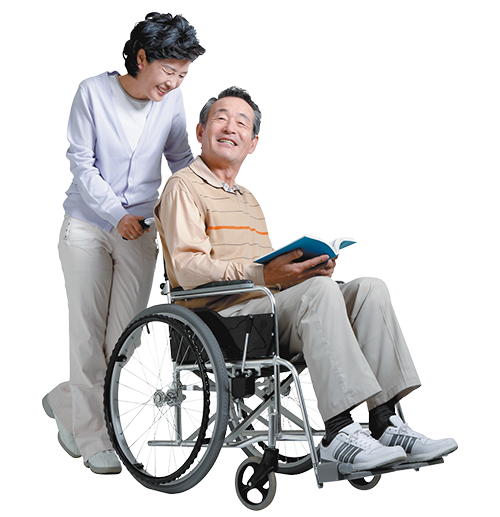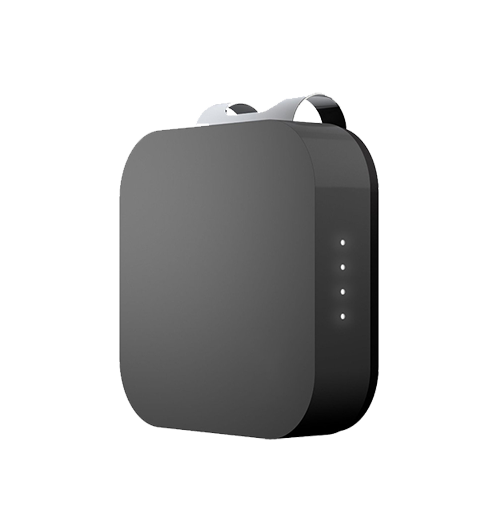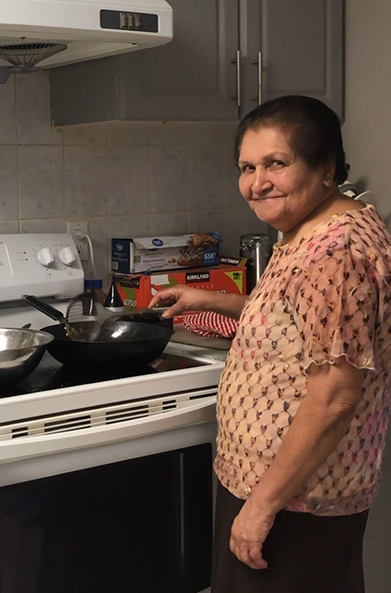
Falls are the #1 cause of fatal injuries for older adults in Canada.
30% of seniors in Canada experience at least 1 fall each year. This results in a direct cost to our healthcare system of $2 billion annually.
Falls can result in hip fractures, reduced mobility, and even death. After an incident, older adults can develop a fear of falling. This limits their physical activity and autonomy. Overall quality of life deteriorates, and independence is lost.
Falls don't happen out of the blue. They result directly from a decline in balance that causes backwards disequilibrium. Over time, the centre of mass of older adults shifts towards the back of their body: this predisposes them to falling more dangerously.
Learn More
Technology can be leveraged to prevent falls from occuring.
Studies have shown that a decrease in gait speed increases the probability of falling during the next few weeks.
To monitor gait, a wearable to be placed on the individual's lower back contains a triaxial accelerometer to quantify the body's movements. The developed software then applies different algorithms to the data to extract valuable information on temporal and spatial aspects of the individual's gait (including step length, step height, step cycle and more).
Learn MoreMy grandmother is an amazing chef.
Anything she makes has the taste of fulfillment, peace and contentment, similar to who she is as a person. She’s always been independent.
One morning, as she was walking out of her bedroom, she suddenly fell to the ground. Luckily, as my mom was coming out of her bedroom, she saw my grandmother falling, and caught her before her head hit the floor.
My grandmother was discharged after 4 days in the hospital with a nose fracture and a couple bruises. The doctor said those will heal on their own, but what no one saw was the fear that my grandmother felt. She hasn’t been herself again, and is always on the edge thinking about whether she’ll fall again or not, and barely cooks anymore.
We worry when we leave her at home, and there's no one there to watch her. Our worst fear is someday we'll come home to find her on the floor, and it’d have been hours since she fell. We want her to be confident, and not fear every time she takes a few steps.

Opportunity Idenftification Process
The process the team took to identify opportunities and problems that
prevent older adults from being independent.
1. Research
Primary and secondary research was
conducted, as well as identifying the deeper
pain points to determine the root causes
for older adults entering long-term care.
2. Interviews and Surveys
Interviews were conducted with
gerontologists, older adults, caregivers, and
specialists to gain a holistic insight into key
factors that lead to independence.
3. Identifying Problems
Falls were the number one factor that led
to loss of independence, while also being the
biggest thing older adults were worried about
as they went about their everyday life.
4. Analysis
Impact research and analysis were
conducted with factors including economic
incentive, prevalence, population and
feasibility to focus on tackling.
5. Brainstorm Solutions
Solutions were brainstormed & validated in
meetings to see if individuals or companies
would purchase this. They were then iterated
on as feedback was implemented.
6. Final Solution
The solution of fall prediction through
monitoring gait was selected as a key focus
based on meetings, research, feasibility and
impact based on the metrics developed.
The Solution
Fall prediction using a wearable device that detects patterns and anticipates these injuries up to 3 weeks in advance.
Learn MoreMonitoring Gait
A wearable device placed on the user's lower back measures walking patterns including step length and gait speed.
Prediction
A steep reduction in these variables indicates a higher likelihood for an oncoming fall in older adults.
Notification
Once predicted, an SMS notification is sent to the individual's physician, caregivers and family members.
Rehabilitation
Guided rehabilitation exercises are available on a mobile application that helps optimize balance and gait.
Benefits of the Solution
- Fall prevention
- Prevention of fall-related health
repercussions - Improvement of quality of life
- Reduced costs for the healthcare
system - Reduced fear of falling
- Peace of mind for caregivers
and family
Technical Overview
A deeper look into the technical aspects of the wearable device
including an explanation of the sensor, data collection, and analysis.




Data input through
wearable device
A triaxial accelerometer on the wearable device placed on the individual's lower back monitors acceleration in real time to quantify the body's movements. This data is then imported to MATLAB, a numerical computing environment.
Algorithms to extract
important data
Filters are applied to the data to remove noise and determine the local minimum and local maximum for initial contact and final contact. Algorithms are applied to extract information on temporal and spatial aspects of the individual's gait (step length & gait speed).
Notifying family and
caregivers
When your walking speed falls below the safety threshold, a text message is sent to your approved family members and caregivers to encourage proactive fall prevention measures to be taken, including rehabilitation exercises and risk minimization at home.
Rehabilitation through
exercises
Exercises available on the app are great for backwards disequilibrium therapy and minimizing fall risks. They help build muscle strength by gradually increasing the amount of weight during exercise and increase balance control.
